4
Cristian Leyton Navarro ● Profesor Asistente
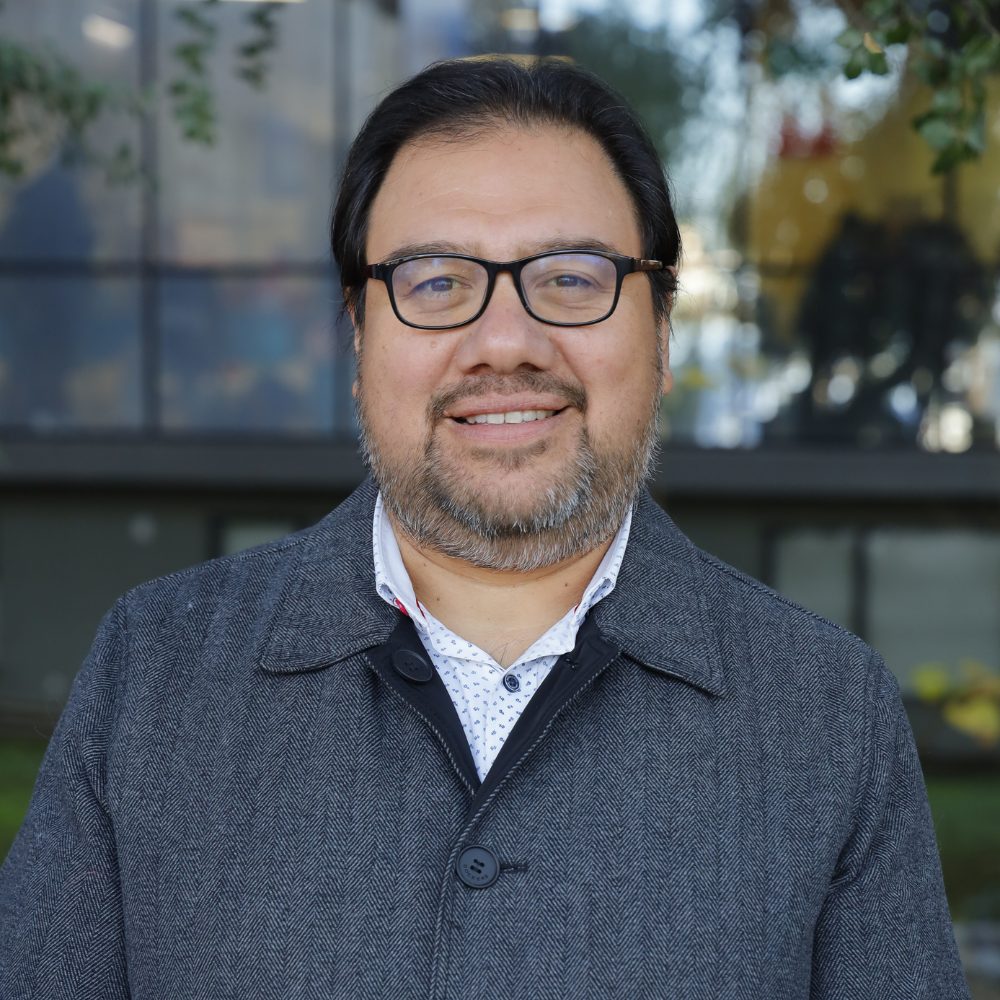
PhD en Política Social, Escuela para Estudios de Políticas de la Universidad de Bristol (Reino Unido).
Trabajador Social, Pontificia Universidad Católica de Chile.
Descripción
Cristian Leyton Navarro, además de ser académico del ICSo, es Profesor del Magíster en Gestión y Políticas Públicas (MGPP) del Departamento de Ingeniería Industrial de la Universidad de Chile. Posee una amplia experiencia como investigador y docente de programas de pregrado, magíster y doctorado en diversas universidades nacionales.
Previamente, ha sido Investigador Principal en RIMISP y se ha desempeñado en diferentes instituciones públicas, a la vez que posee experiencia como consultor de organizaciones no gubernamentales y organismos internacionales como Banco Interamericano de Desarrollo (BID), Organización de las Naciones Unidas para la Alimentación y la Agricultura (FAO), Fondo de las Naciones Unidas para la Infancia (UNICEF), Banco de Desarrollo de América Latina (CAF), entre otros.
Editor de REPP - Revista Estudios de Políticas Públicas. Es autor de diversos artículos y capítulos de libros en revistas y libros nacionales e internacionales. Recientemente editó y escribió varios capítulos en el libro “Implementación de políticas sociales en Chile” (2024).
Sus áreas de interés son: implementación de políticas, descentralización y desigualdad territorial, gobiernos subnacionales (regionales y locales), burocracia a nivel de calle, pobreza y exclusión social.
cristian.leyton@uoh.cl
Gabriela Guevara-Cué ● Profesora Asistente
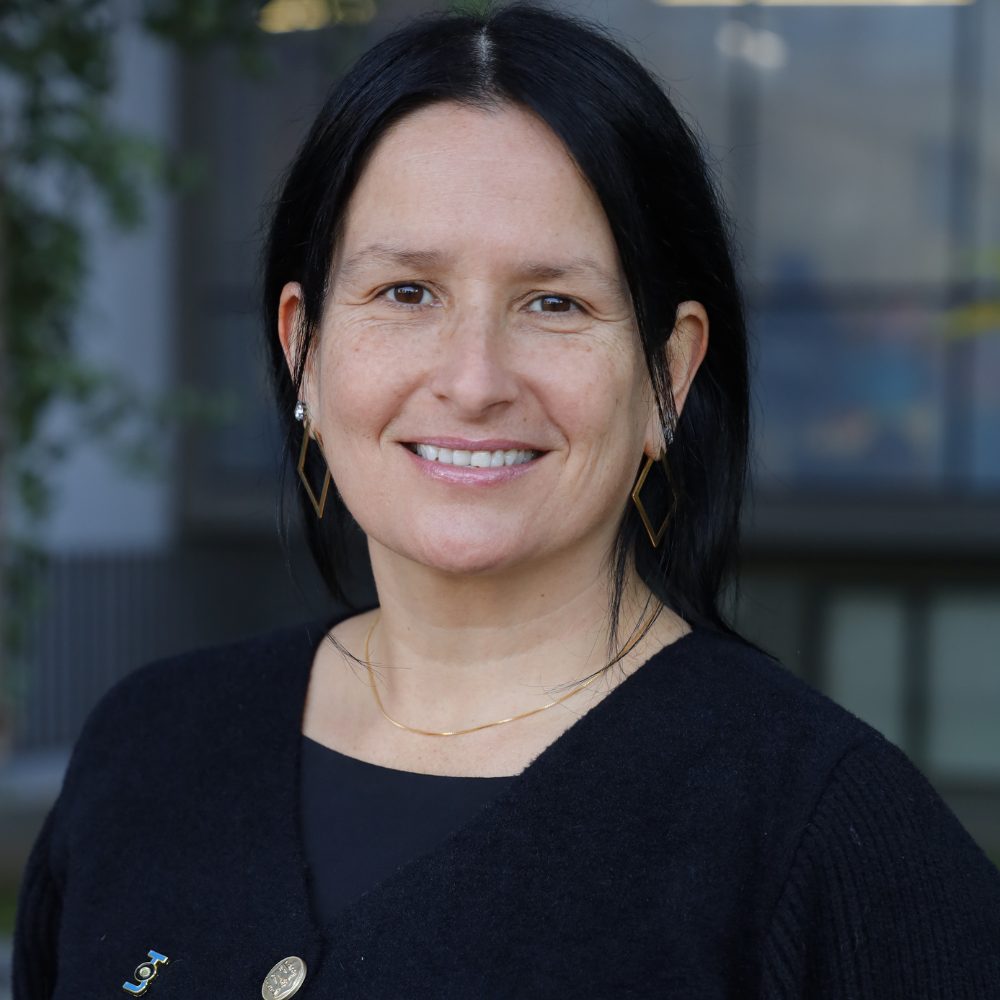
Dra. en Territorio, Espacio y Sociedad, Universidad de Chile.
Geógrafa, Universidad de Chile.
Descripción
Gabriela Guevara-Cué es Profesora Asistente del Instituto de Ciencias Sociales de la Universidad de O’Higgins e Investigadora de la línea Ciudades Justas del Centro de Desarrollo Urbano Sustentable (CEDEUS; Centro ANID-FONDAP); Investigadora colaboradora de la línea Ciudades Resilientes del Centro de Ciencia del Clima y la Resiliencia (CR2; Centro ANID-FONDAP); facilitadora del Grupo de Trabajo (2023-2025) Desigualdades, estructura social y políticas de la línea Desigualdades y pobreza en América Latina y el Caribe del Consejo Latinoamericano de Ciencias Sociales (CLACSO) y miembro de la Red Latinoamericana de IPPA (International Public Policy Association.
Gabriela es Licenciada en Geografía, Geógrafa, Magíster en Gestión y Políticas Públicas y Doctora en Territorio, Espacio y Sociedad por la Universidad de Chile.
Anteriormente, se desempeñó como investigadora postdoctoral de la Línea Ciudades Justas Centro de Desarrollo Urbano Sustentable (CEDEUS; Centro ANID-FONDAP); Coordinadora de Transformación del Centro de Ciencia del Clima y la Resiliencia (CR2; Centro ANID-FONDAP) y como consultora nacional e internacional.
Sus áreas de interés son: gestión y políticas públicas, geografía, justicia espacial y cambio climático, derechos económicos y sociales y territorio, además de la creación de valor con pertinencia territorial y desarrollo sustentable.
2
4
2
- REVISTA GeoJournal
- 2024
Revealing spatial (in)justice: exploring the dynamics of triple spatiality in Chile and its impact on the generation of spatial barriers to social rights
• Gabriela Andrea Guevara Cue
- REVISTA Revista de Geografía Norte Grande
- 2024
La incompleta y renuente descentralización chilena: Un análisis multiescalar del sistema político-administrativo y sus recientes transformaciones
• Miguel Contreras • Gabriela Andrea Guevara Cue • Marcelo Cárdenas
- REVISTA Geoscience
- 2023
Geodynamic Hotspots in a Periglacial Landscape: Natural Hazards and Impacts on Productive Activities in Chilean Fjordlands, Northern Patagonia
• Gabriela Andrea Guevara Cue
- REVISTA Revista Estudios de Políticas Públicas
- 2016
Innovación en Chile como aporte a la democratización de los servicios: análisis del caso de Gendarmería de Chile
• Gabriela Andrea Guevara Cue
- Chile -
Seguridad Hídrica en Chile: Caracterización y Perspectivas de Futuro
- Chiie -
“Marea roja” y cambio global: elementos para la construcción de una gobernanza integrada de las Floraciones de Algas Nocivas (FAN)
- El Uruguay desde la sociología XX
- 2023
Estudio de casos sobre siete localidades corporativas en el Uruguay del siglo XX
- Territorios, bienestar y migración: Uruguay en la primera mitad del siglo XX
- 2023
Necesidades humanas, bienestar y sectores de provisión pública: un marco teórico para su estudio
- Estado, poblamientos y estructura social: Uruguay desde la colonia al siglo XX
- 2022
Localidades corporativas
- Las ciudades ante el Covid-19: Nuevas direcciones para la investigación urbana y las políticas públicas.
- 2020
Justicia espacial y habitar digno. La pandemia como punto de partida para una nueva generación de políticas públicas territoriales.
gabriela.guevara@uoh.cl
Karina Cerda Oñate ● Profesora Asistente
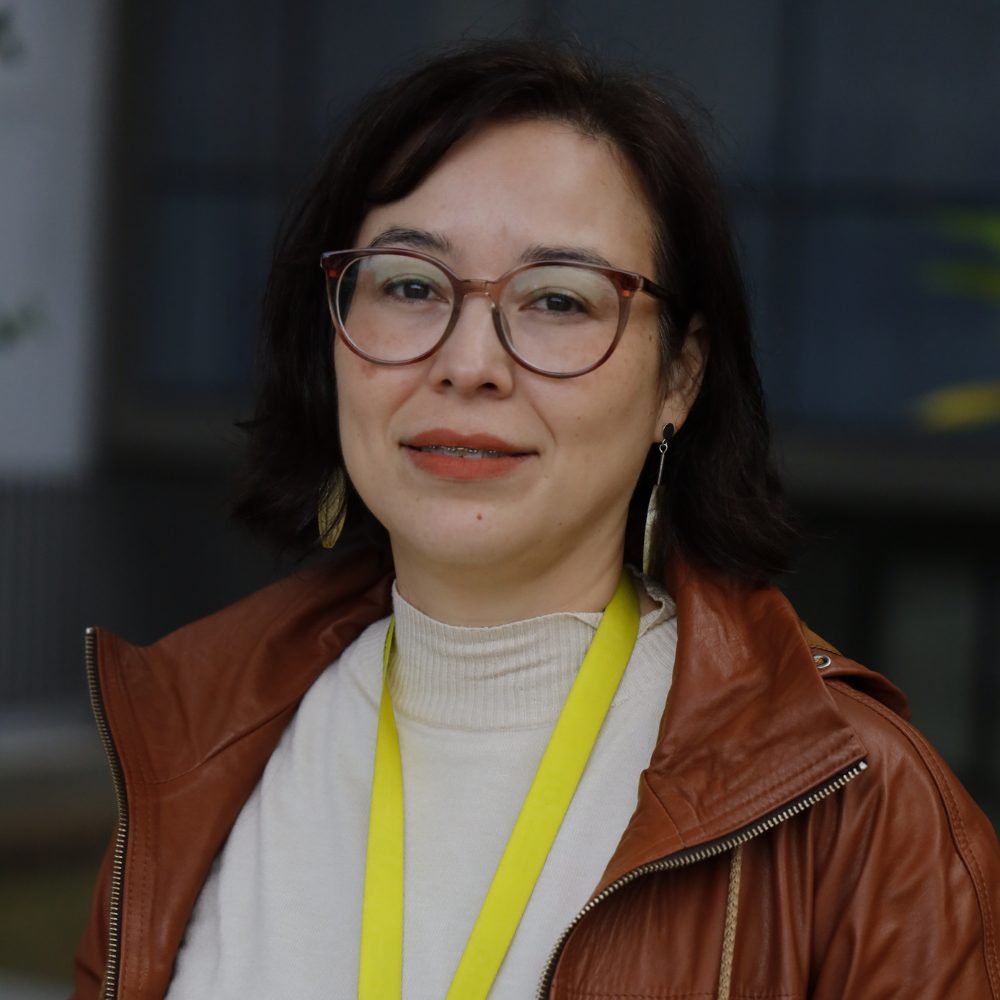
Doctora en Lingüística, Pontificia Universidad Católica de Chile.
Traductora Inglés-Portugués, Universidad de Santiago de Chile.
Descripción
La doctora Karina Cerda Oñate es lingüista. Sus intereses de investigación se centran en la enseñanza-aprendizaje de lenguas extranjeras. Particularmente, Karina ha investigado sobre la enseñanza-aprendizaje del español y el inglés como lenguas extranjeras respecto de su desarrollo lingüístico y de las políticas públicas asociadas a la enseñanza-aprendizaje de lenguas extranjeras en Chile. La doctora Cerda Oñate ha publicado en revistas académicas nacionales e internacionales y es miembro de la Sociedad Chilena de Lingüística (SOCHIL).
19
4
1
- REVISTA Eurasian Journal of Applied Linguistics
- 2025
Impact of Explicit and Implicit Instruction on EFL Learners Segmental Pronunciation Accuracy of Transparent and Non-Transparent Words
• Karina Ester Cerda Oñate • Trinidad Cisterna • Fernanda Norambuena
- REVISTA Forum for Linguistic Studies
- 2025
L2 Pronunciation Instruction: A Proposal Considering Nativeness in the Field of L2 Linguistics
• Karina Ester Cerda Oñate • María Ignacia Urtubia-Vergara
- REVISTA Journal of Librarianship and Information Science
- 2024
An understanding of school libraries within the technical vocational education and training system: Chile’s CRA school libraries
• Fernando Bolaños • Ola Pilerot • Karina Ester Cerda Oñate • Miguel Ángel Cerna
- REVISTA Neofilolog
- 2024
On the effects of L2 aptitude, phonological short-term memory, and L2 motivation on L2 listening performance
• Mauricio Véliz-Campos • Karina Ester Cerda Oñate • Adriana Biedro? • Cristian A. Rojas-Barahona • Leonardo Veliz
- REVISTA El Guiniguada
- 2024
Propuestas de formación inicial docente para aulas multilingües en la escuela chilena
• Gloria Macarena Toledo Vega • Karina Ester Cerda Oñate • Andrea Lizasoain
- REVISTA Literatura y lingüística
- 2024
Desarrollo de interlengua en escolares secundarios haitianos: estudio de caso de una escuela en Chile
• Gloria Toledo • Karina Ester Cerda Oñate • Francisco Quilodrán Peredo
- REVISTA DELTA: Documentação de Estudos em Lingüística Teórica e Aplicada
- 2023
Factores relevantes para la evaluación de la producción escrita de estudiantes haitianos no hispanohablantes en la escuela pública chilena
• Gloria Toledo Vega • Andrea Lizasoain • Karina Ester Cerda Oñate
- REVISTA Estudios Filológicos
- 2023
Competencia interpragmática: enseñanza y actitudes hacia la enseñanza de la competencia interpragmática en el aula de lenguas extranjeras
• Karina Ester Cerda Oñate • María Ignacia Urtubia Vergara • Gabriel Pairicán T. • Francisco Antonio Nocetti
- REVISTA Literatura y lingüística
- 2023
THE ROLE OF THE TARGET LANGUAGE IN SOCIAL IMMERSION OF HAITIAN IMMIGRANTS IN CHILE AND EDUCATORS’ BELIEFS ABOUT ITS TEACHING AND LEARNING*
• Gloria Toledo • Karina Ester Cerda Oñate • Andrea Lizasoain
- REVISTA Lengua y migración
- 2023
Alfabetización escolar en aprendientes de lenguas adicionales no alfabetizados: aspectos sociales, cognitivos, lingüísticos y pedagógicos
• Gloria Toledo Vega • Francisco Quilodrán Peredo • Karina Ester Cerda Oñate
- REVISTA Journal of Teacher Education and Educators
- 2022
Preservice and inservice teachers language ideologies about non-Spanish-speaking students and multilingualism in Chilean classrooms
• Karina Ester Cerda Oñate • Gloria Toledo Vega • Andrea Lizasoain
- REVISTA Boletín de filología
- 2022
Formación Inicial Docente, currículum y sistema escolar: ¿cuál es el lugar de los niños y adolescentes inmigrantes no hispanohablantes en el sistema educativo chileno?
• Gloria Toledo Vega • Karina Ester Cerda Oñate • Andrea Lizasoain
- REVISTA Logos: Revista De Lingüística, Filosofía Y Literatura
- 2022
Haitian Immigrant Students’ Access and Linguistic Inclusion in Chilean Schools
• Gloria Toledo Vega • Andrea Lizasoain • Karina Ester Cerda Oñate
- REVISTA Speech Communication
- 2021
Speech rhythm convergence in a dyadic reading task
• Karina Ester Cerda Oñate • Gloria Toledo Vega • Mikhail Ordin
- REVISTA DELTA: Documentação de Estudos em Lingüística Teórica e Aplicada
- 2021
Factores relevantes para la evaluación de la producción escrita de estudiantes haitianos no hispanohablantes en la escuela pública chilena
• Gloria Toledo Vega • Andrea Lizasoain • Karina Ester Cerda Oñate
- REVISTA Onomázein Revista de lingüística filología y traducción
- 2019
Comprensión lectora, estilos atribucionales, estrategias cognitivas y de autorregulación e inteligencia lógica: Predictores del rendimiento académico general y en lenguaje de estudiantes de establecimientos educativos de alta vulnerabilidad social
• Gamal Cerda Etchepare • Karina Ester Cerda Oñate • Omar Salazar Provoste • Bernardo Riffo
- REVISTA Calidoscópio
- 2017
Uso y adquisición de pronombres personales átonos en lusohablantes y angloparlantes, aprendientes de ELE
• Karina Ester Cerda Oñate • Gloria Toledo Vega • Natalia Möller
- REVISTA Boletín de filología
- 2016
Propuesta de un diseño de investigación mixto para el estudio del ritmo en diferentes variedades dialectales del español
• Karina Ester Cerda Oñate
- REVISTA Onomázein Revista de lingüística, filología y traducción
- 2015
Variación diatópica, discursiva y fonética de /s/ codal en el habla de profesionales chilenos
• Karina Ester Cerda Oñate • Darío Fuentes-Grandón • Jaime Soto-Barba • Nahida Hamdan Rosales
- 1240667
- Marzo 2024 - Marzo 2027
Descripción y progresión de los significados ideacionales representados en los libros escolares de inglés
- 1221032
- Marzo 2022 - Marzo 2025
Medición del efecto del habla sincronizada en la inteligibilidad y la comprensibilidad en aprendientes de inglés como lengua extranjera
- 1220209
- Marzo 2022 - Marzo 2026
On the effects of implicit and explicit corrective feedback on perception and production of English sentence accent and (post)nuclear intonation as moderated by L2 foreign language aptitude, working memory and musical ability
- 1190254
- Diciembre 2020 - Marzo 2023
Desarrollo de interlengua en estudiantes secundarios haitianos
- Lingüística del castellano chileno: Estudios sobre variación, innovación, contacto e identida
- 2021
El habla sincronizada como dispositivo para la producción del ritmo del español como L2
karina.cerda@uoh.cl
María Paz Trebilcock Gac ● Profesora Asistente

Doctora en Sociología, Pontificia Universidad Católica de Chile.
Licenciada en Sociología, Pontificia Universidad Católica de Chile.
Descripción
María Paz es Dra. en Sociología por la Pontifica Universidad Católica de Chile. Sus líneas de investigación se enmarcan en la sociología urbana, específicamente en estudios de desigualdades territoriales, abordando temáticas como pobreza urbana, segregación residencial, vivienda social, gentrificación, entre otros.
Desde el año 2021 es investigadora Adjunta del Instituto Violencia y Democracia (Viodemos).
Se ha desempeñado como IR y coinvestigadora en diversos fondos concursables ANID como Fondecyt y Anillos.
En su experiencia en docencia destaca por su experiencia en los cursos de métodos de la investigación, estadísticas, seminarios de tesis, entre otros
3
- 11220807
- Marzo 2022 - Julio 2025
Acceso a la vivienda en tiempos de crisis: estrategias de acceso al suelo de los pobres urbanos en Santiago de Chile
- COVID0476
- Julio 2020 - Noviembre 2021
Variabilidad geográfica del impacto por déficit o postergación de atenciones hospitalarias para enfermedades crónicas frente a la pandemia COVID-19
- 1190874
- Marzo 2019 - Marzo 2022
Variabilidad geográfica en el acceso a la atención hospitalaria en Chile
maria.trebilcock@uoh.cl
Carlos Sepúlveda Guzmán ● Profesor Asistente
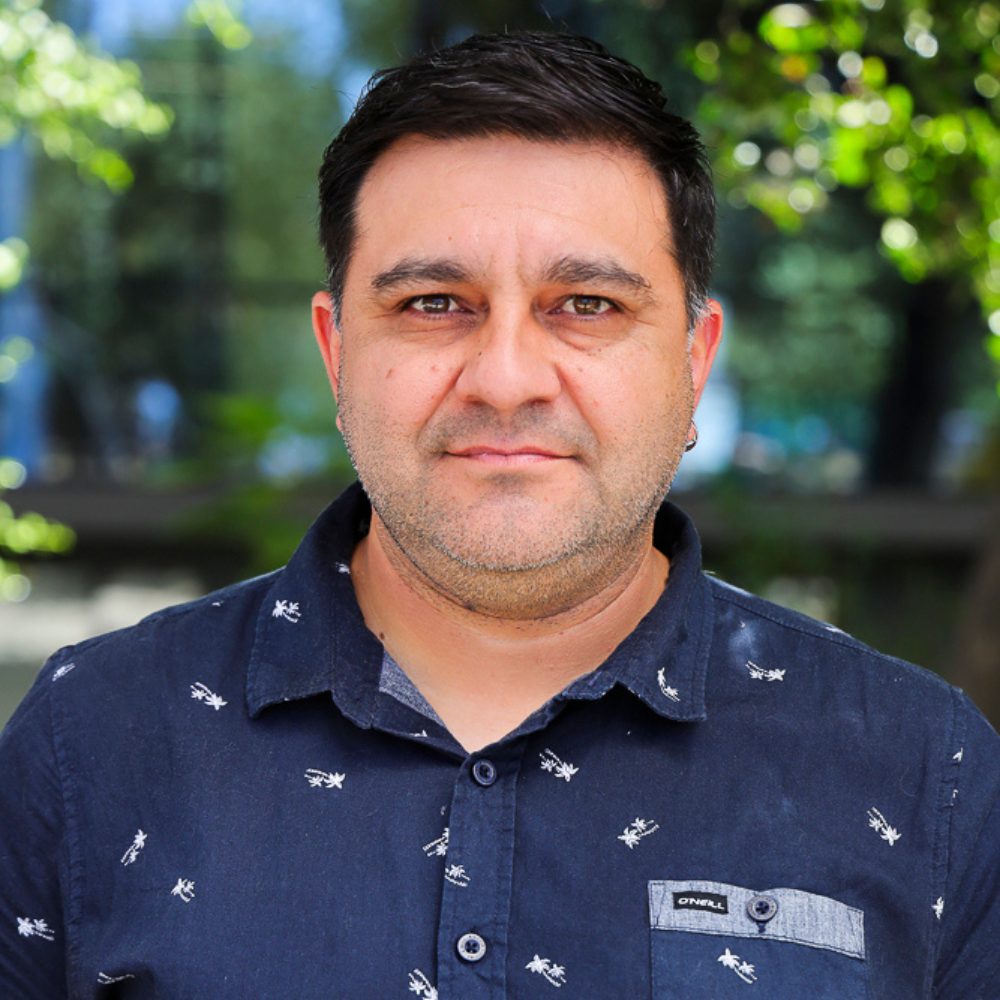
Doctor en Nutrición y Alimentos, Universidad de Chile.
Profesor de Educación Física, Universidad de Playa Ancha.
Descripción
Carlos Sepúlveda Guzmán es Profesor de Educación Física de la Universidad de Playa Ancha y Doctor en Nutrición y Alimentos de la Universidad de Chile. Realizó su postdoctorado en el Instituto de Nutrición y Alimentos de la Universidad de Chile. Actualmente es Profesor Asistente en el Instituto de Ciencias de la Salud de la Universidad de O’Higgins.
La línea de investigación del Dr. Sepúlveda está enfocada en dos aspectos: a) Estudiar el papel que juega el ejercicio físico sobre la prevención y tratamiento de enfermedades relacionadas a la obesidad con énfasis en músculo esquelético e hígado; b) Desarrollar herramientas de bajo costo y fácil aplicación para la valoración del rendimiento humano en contextos clínicos.
13
3
2
- REVISTA Scientific Reports
- 2025
Validity and reliability of the step test to estimate maximal oxygen consumption in pediatric population
• Gerardo Weisstaub • José González Farías • Ignacio Orizola • Juan Borquez • Matías Monsalves-Álvarez
- REVISTA Molecular and Cellular Biochemistry
- 2024
Folate induces stemness and increases oxygen consumption under glucose deprivation by notch-1 pathway activation in colorectal cancer cell
• Juan Rodríguez • Matías Monsalves-Álvarez • Carlos Andrés Sepúlveda Guzmán • Camila Donoso-Barraza • Rodrigo Troncoso
- REVISTA Journal of Functional Morphology and Kinesiology
- 2024
Cycling Isokinetic Peak Force Explains Maximal Aerobic Power and Physiological Thresholds but Not Cycling Economy in Trained Triathletes
• Felipe Giancaspero • Carlos Burgos-Jara • Carlos Andrés Sepúlveda Guzmán • Danni Haichellis • Roberto Meneses-Valdés
- REVISTA Biological Research
- 2023
The CB1 cannabinoid receptor regulates autophagy in the tibialis anterior skeletal muscle in mice
• Carlos Andrés Sepúlveda Guzmán • Juan Manuel Rodriguez • Matías Monsalves Álvarez • Camila Donoso-Barraza • Francisco Pino-de la Fuente
- REVISTA Frontiers in Nutrition
- 2023
High-intensity interval training prevents muscle mass loss in overweight Chilean young adults during a hypocaloric-Mediterranean diet: a randomized trial
• Matías Monsalves Álvarez • Teresa Jimenez • Daniel Bunout • Gladys Barrera • Sandra Hirsch
- REVISTA BMJ Open Sport & Exercise Medicine
- 2023
Next steps to advance general physical activity recommendations towards physical exercise prescription: a narrative review
• Raúl Festa • Emilio Jofré Saldía • Alejandro Candia • Matías Monsalves Álvarez • Marcelo Alejandro Flores Opazo
- REVISTA Food and Chemical Toxicology
- 2022
Hydrogen sulfide disrupts insulin-induced glucose uptake in L6 skeletal muscle cells
• Camila Donoso-Barraza • Juan Borquez • Carlos Andrés Sepúlveda Guzmán • Francisco Díaz-Castro • Claudia Sepulveda-Quiñenao
- REVISTA Sports Medicine Open
- 2021
Modified Talk Test: A randomised cross-over trial investigating the comparative utility of two "Talk Test" for determining aerobic training zones in overweight and obese patients
• Ignacio Orizola-Cáceres • Hugo Cerda-Kohler • Carlos Burgos-Jara • Roberto Meneses-Valdés • Rafael Gutierrez-Pino
- REVISTA Nutrients
- 2020
?-Hydroxybutyrate Increases Exercise Capacity Associated with Changes in Mitochondrial Function in Skeletal Muscle
• Matías Monsalves Álvarez • Pablo Esteban Morales • Mauricio Castro-Sepulveda • Carlos Andrés Sepúlveda Guzmán • Juan Manuel Rodriguez
- REVISTA International Journal of Molecular Sciences
- 2020
Moderate Aerobic Exercise Training Prevents the Augmented Hepatic Glucocorticoid Response Induced by High-Fat Diet in Mice
• Jonatan Dassonvalle • Francisco Díaz-Castro • Camila Donoso-Barraza • Carlos Andrés Sepúlveda Guzmán • Francisco Pino-de la Fuente
- REVISTA Biochimica et Biophysica Acta (BBA) - Molecular and Cell Biology of Lipids
- 2019
Exercise regulates lipid droplet dynamics in normal and fatty liver
• Francisco Pino-de la Fuente • Laura Quezada • Carlos Andrés Sepúlveda Guzmán • Matías Monsalves Álvarez • Juan M. Rodríguez
- REVISTA International Journal of School Health
- 2019
HIITing Health in School: Can High Intensity Interval Training Be a Useful and Reliable Tool for Health on a School-Based Enviroment? A Systematic Review
• Rafael Zapata-Lamana • Igor Cigarroa Cuevas • Victor Fuentes • Claudio Soto Espindola • Eva Parrado Romero
- REVISTA Revista Brasileira de Medicina do Esporte
- 2014
Influência do exercício físico na cognição: uma atualização sobre mecanismos fisiológicos
• Carlos Merege • Cristiano Robles • Carlos Andrés Sepúlveda Guzmán • André dos Santos Costa • Antonio Herbert Lancha Junior
- Abril 2023 - Abril 2024
No Whey: Lácteos altos en proteína y ejercicio de resistencia para la mejora de la composición corporal y función muscular de personas mayores
- Marzo 2023 - Marzo 2024
La suplementación diaria con cuerpos cetónicos durante la recuperación de una lesión aguda previene la infiltración grasa y acelera la reparación muscular
- SA19I0106
- Enero 2020 - Diciembre 2023
Validación del Test del Escalón para medir la condición física en niños, niñas y adolescentes
- MEDICINA Y CIENCIAS APLICADAS AL FÚTBOL. CONMEBOL.
- 2022
Demandas bioenergéticas.
- MEDICINA Y CIENCIAS APLICADAS AL FÚTBOL. CONMEBOL.
- 2022
Evaluación básica y avanzada en el fútbol.
carlos.sepulveda@uoh.cl
Sebastián Herrera León ● Profesor Asistente

Doctor of Science (Technology) in Industrial Engineering and Management, LUT University (Finlandia).
Ingeniero Civil Químico, Universidad Católica del Norte.
Descripción
Sebastián Herrera León obtuvo su Licenciatura en Ciencias de la Ingeniería y su Título Profesional de Ingeniero Civil Químico en la Universidad Católica del Norte en 2014. Posteriormente, obtuvo un Doctorado en Ingeniería de Procesos Minerales en la Universidad de Antofagasta en 2019 y un Doctorado en Ingeniería Industrial y Gestión en
LUT University (Finlandia) en 2024.
Actualmente, el Dr. Herrera-León centra su investigación en el estudio de las interacciones entre tecnología, medioambiente y sociedad en la industria minera y energética. Su enfoque interdisciplinario vincula las Ingenierías con las Ciencias Sociales para comprender y analizar las transformaciones industriales y territoriales desde un enfoque de sustentabilidad.
sebastian.herrera@uoh.cl
Alexander Vergara Robles ● Profesor Asistente

Doctor en Ciencias, mención Biología Molecular, Celular y Neurociencias, Universidad de Chile.
Ingeniero en Biotecnología Molecular, Universidad de Chile
Descripción
Alexander Vergara es Ingeniero en Biotecnología Molecular y Doctor en Ciencias de la Universidad de Chile. Su investigación se centra en el campo de la Bioinformática, donde utiliza análisis multiómicos y análisis de redes para estudiar el estrés en plantas y cómo éstas interactúan con su entorno. Actualmente se desempeña como profesor asistente en el Instituto de Ciencias de la Ingeniería de la Universidad de O'Higgins (UOH).
- REVISTA Scientific Reports
- 2024
Pseudomonas syringae infectivity correlates to altered transcript and metabolite levels of Arabidopsis mediator mutants
• Jeanette Blomberg • Viktor Tasselius • Alexander Marcell Vergara Robles • Fazeelat Karamat • Qari Muhammad Imran
- REVISTA Nucleic Acids Research
- 2024
Growth-regulated co-occupancy of Mediator and Lsm3 at intronic ribosomal protein genes
• Wael R Abdel-Fattah • Mattias Carlsson • Guo-Zhen Hu • Ajeet Singh • Alexander Marcell Vergara Robles
- REVISTA Plant, Cell & Environment
- 2024
CDK8 of the mediator kinase module connects leaf development to the establishment of correct stomata patterning by regulating the levels of the transcription factor SPEECHLESS (SPCH)
• Carmen Hermida • Alexander Marcell Vergara Robles • Luis Cervela-Cardona • Xu Jin • Stefan Björklund
- REVISTA Physiologia Plantarum
- 2024
Nitrogen Stress Memory in Quinoa: Maternal Effects on Seed Metabolism and Offspring Growth and Physiology
• Catalina Castro • Javiera Rojas • José Ortíz • Rodrigo Sanhueza-Lepe • Francisco Poblete
- REVISTA Foundations
- 2024
Effects of Colored Noise in the Dynamic Motions and Conformational Exploration of Enzymes
• Pedro Ojeda-May • Alexander Marcell Vergara Robles
- REVISTA Journal of Experimental Botany
- 2022
SeedTransNet: a directional translational network revealing regulatory patterns during seed maturation and germination
• Bing Bai • Bastian Schiffthaler • Sjors van der Horst • Leo Willems • Alexander Marcell Vergara Robles
- REVISTA New Phytologist
- 2022
GENOMES UNCOUPLED1 plays a key role during the de-etiolation process in Arabidopsis
• Tamara Hernández-Verdeja • Linda Vuorijoki • Xu Jin • Alexander Marcell Vergara Robles • Carole Dubreuil
- REVISTA Tree Physiology
- 2021
Candidate regulators and target genes of drought stress in needles and roots of Norway spruce
• Julia C Haas • Alexander Marcell Vergara Robles • Alonso R Serrano • Sanatkumar Mishra • Vaughan Hurry
- REVISTA Plant, Cell & Environment
- 2021
Norway spruce deploys tissue-specific responses during acclimation to cold
• Alexander Marcell Vergara Robles • Julia C. Haas • Tuuli Aro • Paulina Stachula • Nathaniel R. Street
- REVISTA BMC Plant Biology
- 2020
Seed characterization and early Nitrogen metabolism performance of seedlings from Altiplano and Coastal ecotypes of Quinoa
• Katherine Pinto/Irish • Rodrigo Alvarez • Teodoro Coba de la Pena • Cristian Ibanez • Alexander Marcell Vergara Robles
- REVISTA Journal of Cellular Biochemistry
- 2001
Iron-induced oxidative stress up-regulates calreticulin levels in intestinal epithelial (Caco-2) cells
• Marco T. Núñez • Andrea Osorio • Victoria Tapia • Alexander Marcell Vergara Robles • Casilda V. Mura
alexander.vergara@uoh.cl
Carlos Muñoz Neira ● Profesor Asistente

PhD in Translational Health Sciences, University of Bristol, Bristol, UK.
Psicólogo, Universidad de Chile.
Descripción
El Dr. Carlos Muñoz Neira combina evaluaciones neuropsicológicas y neuroimágenes para investigar diversas formas de deterioro cognitivo y demencia. Recientemente completó una formación postdoctoral en análisis de neuroimágenes en SITRaN (Sheffield Institute of Translational Neuroscience), centro de investigación perteneciente a la University of Sheffield, y también fue investigador visitante en el Department of Psychiatry de la University of Cambridge. Carlos posee un PhD in Translational Health Sciences y un MSc in Neuropsychology otorgados por la University of Bristol. Adicionalmente, es Psicólogo Clínico titulado en la Universidad de Chile.
En Chile, Carlos ha trabajado mayoritariamente en la validación de pruebas neuropsicológicas para hispanohablantes con demencia. En Inglaterra, sus investigaciones se han centrado en el uso de neuroimágenes en angloparlantes con demencia y en el estudio de sujetos jóvenes de China con predisposición genética al desarrollo de la enfermedad de Alzheimer.
Actualmente Carlos investiga los correlatos neurales del deterioro del insight sobre el diagnóstico y/o los síntomas en una cohorte angloparlante conformada por pacientes con deterioro cognitivo leve y enfermedad de Alzheimer, así como también por adultos mayores cognitivamente sanos.
20
2
- REVISTA Journal of Clinical Medicine
- 2024
Differences in Grey Matter Concentrations and Functional Connectivity between Young Carriers and Non-Carriers of the APOE e4 Genotype
• Carlos Eduardo Muñoz Neira • Jianmin Zeng • Ludmila Kucikova • Weijie Huang • Xiong Xiong
- REVISTA Frontiers in Behavioral Neuroscience
- 2023
L-DOPA increases slow-wave sleep duration and selectively modulates memory persistence in older adults
• Hanna Isotalus • Will Carr • Jonathan Blackman • George Averill • Oliver Radtke
- REVISTA Journal of Neurology
- 2023
Genetic risk factors of Alzheimer’s Disease disrupt resting-state functional connectivity in cognitively intact young individuals
• Ludmila Kucikova • Jianmin Zeng • Carlos Eduardo Muñoz Neira • Graciela Muniz-Terrera • Weijie Huang
- REVISTA Alzheimers & Dementia
- 2023
Artificial intelligence for diagnostic and prognostic neuroimaging in dementia: A systematic review
• Robin Borchert • Tiago Azevedo • AmanPreet Badhwar • José Bernal • Mathew Betts
- REVISTA Journal of Neurology
- 2019
Mapping the neuroanatomy of functional decline in Alzheimer’s disease from basic to advanced activities of daily living
• Andrea Slachevsky • Gonzalo Forno • Paulo Barraza • Eneida Mioshi • Carolina Delgado
- REVISTA Journal of Alzheimer's Disease
- 2019
Alzheimer’s Disease or Behavioral Variant Frontotemporal Dementia? Review of Key Points Toward an Accurate Clinical and Neuropsychological Diagnosis
• Gada Musa • Andrea Slachevsky • Carlos Eduardo Muñoz Neira • Carolina Mendez-Orellana • Roque Villagra
- REVISTA NeuroImage: Clinical
- 2019
Neural correlates of altered insight in frontotemporal dementia: a systematic review
• Carlos Eduardo Muñoz Neira • Andrea Tedde • Elizabeth Coulthard • N. Jade Thai • Catherine Pennington
- REVISTA Dementia & Neuropsychologia
- 2017
Utility of the Neuropsychiatric Inventory Questionnaire (NPI-Q) in the assessment of a sample of patients with Alzheimer’s disease in Chile
• Gada Musa • Fernando Henríquez • Carlos Eduardo Muñoz Neira • Carolina Delgado • Patricia Lillo
- REVISTA Journal of Alzheimer's Disease
- 2017
Tau Platelets Correlate with Regional Brain Atrophy in Patients with Alzheimer’s Disease
• Andrea Slachevsky • Leonardo Guzmán-Martínez • Carolina Delgado • Pablo Reyes • Gonzalo Farías
- REVISTA Archives of Clinical Neuropsychology
- 2016
Comparison of the Psychometric Properties of the "Word" and "Picture" Versions of the Free and Cued Selective Reminding Test in a Spanish-Speaking Cohort of Patients with Mild Alzheimer’s Disease and Cognitively Healthy Controls
• Carlos Eduardo Muñoz Neira • Ambar Soto • Melissa Martínez • Fernando Henríquez • Patricia Flores
- REVISTA JSM Alzheimers Disease and Related Dementia
- 2016
Neuropsychiatric Characteristics of Alzheimers Disease and the Behavioral Variant of Frontotemporal Dementia
• Carlos Eduardo Muñoz Neira • Andrea Slachevksy • Oscar L. López
- REVISTA JSM Alzheimer's Disease and Related Dementia
- 2016
Neuropsychiatric Characteristics of Alzheimer’s Disease and the Behavioral Variant of Frontotemporal Dementia
• Carlos Eduardo Muñoz Neira • Andrea Slachevsky • Oscar L. López
- REVISTA Journal of the Neurological Sciences
- 2015
Cognitive and functional impairment: Correlative and predictive analyses across a sample made up of patients with dementia, MCI and controls
• G. Musa Salech • Carlos Eduardo Muñoz Neira • C. Delgado • F. Henríquez • A. Slachevsky
- REVISTA International Journal of Geriatric Psychiatry
- 2014
Test Your Memory–Spanish version (TYM-S): a validation study of a self-administered cognitive screening test
• Carlos Eduardo Muñoz Neira • Fernando Henríquez Chaparro • Carolina Delgado • Jerry Brown • Andrea Slachevsky
- REVISTA Journal of Alzheimer's Disease
- 2013
The CUIDEME study: Determinants of burden in chilean primary caregivers of patients with dementia
• Andrea Slachevsky • Marilú Budinich • Claudia Miranda-Castillo • Javier Nuñez-Huasaf • Jaime Silva
- REVISTA Dementia & Neuropsychologia
- 2013
Chilean version of the INECO Frontal Screening (IFS-Ch): Psychometric properties and diagnostic accuracy
• Josefina Ihnen • Andrés Antivilo • Carlos Eduardo Muñoz Neira • Andrea Slachevsky
- REVISTA Journal of the American Academy of Psychiatry and the Law
- 2013
Psychosis-related matricide associated with a lesion of the ventromedial prefrontal cortex
• Gricel Orellana • Luis Alvarado • Carlos Eduardo Muñoz Neira • Rodrigo Ávila • Mario F. Méndez
- REVISTA Revista Médica de Chile
- 2012
Propiedades psicométricas y utilidad diagnóstica del Addenbrookes Cognitive Examination-Revised (ACE-R) en una muestra de ancianos chilenos
• Carlos Eduardo Muñoz Neira • Fernando Henríquez Chaparro • Josefina Ihnen • Mauricio Sánchez • Patricia Flores
- REVISTA Revista Médica de Chile
- 2012
Descomponiendo el síndrome de déficit atencional en el adulto: hacia un entendimiento de su heterogeneidad pronóstica
• Andrea Slachevsky • Carolina Pérez Jara • Jaime Silva • Amparo Ruiz-Tagle • Rocío Mayol
- REVISTA Dementia and Geriatric Cognitive Disorders
- 2012
The Technology – Activities of Daily Living Questionnaire: A Version with a Technology-Related Subscale
• Carlos Eduardo Muñoz Neira • Oscar L. López • Rodrigo Riveros • Javier Nuñez-Huasaf • Patricia Flores
- REVISTA Revista Médica de Chile
- 2011
Formación en Neuropsiquiatría: ¿Una necesidad de país?
• Luis Alvarado • Carlos Eduardo Muñoz Neira • Gricel Orellana • Andrea Slachevsky
- REVISTA The Primary Care Companion For CNS Disorders
- 2011
Late-Onset Cinephilia and Compulsive Behaviors: Harbingers of Frontotemporal Dementia
• Andrea Slachevsky • Carlos Eduardo Muñoz Neira • Javier Nuñez-Huasaf • Theodore A. Stern • Carl R. Blesius
- REVISTA Revista Médica de Chile
- 2010
Utilidad de un cuestionario breve dirigido al informante para el diagnóstico temprano de casos de demencia: La versión Chilena del AD8 (AD8-Ch)
• Carlos Eduardo Muñoz Neira • Javier Nuñez-Huasaf • Patricia Flores • María Isabel Behrens • Andrea Slachevsky
- REVISTA Alzheimer's & Dementia
- 2010
P3-145: Activities of daily living questionnaire–chilean version: Psychometric properties and diagnostic utility including a tecnology sub-scale
• Andrea Slachevsky • Carlos Eduardo Muñoz Neira • Rodrigo Riveros • Patricia Flores • Elisabeth Wenk
- Proyecto Nº 3250704
- Abril 2025 - Diciembre 2027
Fondecyt de Postdoctorado 2025
- Proyecto URO 21991
- Enero 2025 - Diciembre 2025
Concurso de antecedentes de Agosto 2024 para optar a posiciones de Investigador/a Postdoctoral en la Universidad de OHiggins
- Proyecto URO 21991
- Enero 2025 - Diciembre 2025
Concurso de antecedentes de Agosto 2024 para optar a posiciones de Investigador/a Postdoctoral en la Universidad de O’Higgins
carlos.munozn@uoh.cl
Juan Carlos Pozo Vera ● Profesor Asistente
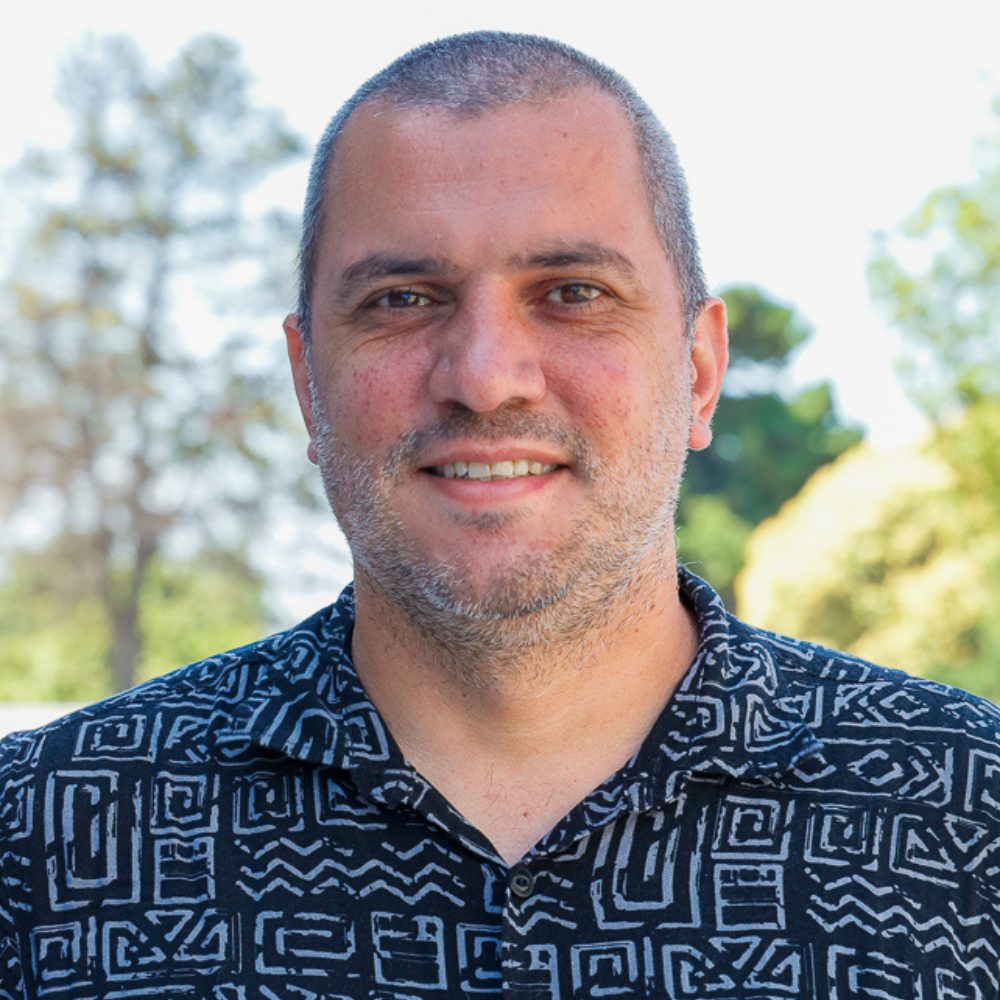
Doctorado en Ciencias con mención en Matemáticas, Universidad de Chile
Licenciado en Ciencias con mención en Matemáticas, Universidad de Chile
Descripción
El Dr. Juan Carlos Pozo obtuvo su doctorado en Matemáticas en la Facultad de Ciencias de la Universidad de Chile el año 2013. Como parte de su tesis doctoral, estudió la propiedad de regularidad maximal de ciertas ecuaciones de evolución no-locales en tiempo, y estudió propiedades de regularidad de familias resolvente asociadas a ecuaciones integro-diferenciales. Además, realizó un postdoctorado en la Universidad de Santiago de Chile, donde comenzó a estudiar la teoría de semigrupos de operadores y algunas generalizaciones. Posteriormente, fue professor asociado de la Universidad de Chile. Actualmente, es Profesor Asistente en el Instituto de Ciencias de la Ingeniería de la Universidad de O'Higgins. Sus intereses de investigación se centran en el estudio de ecuaciones en derivadas parciales (EDPs) y en las propiedades dinámicas de sus soluciones. Particularmente, se ha enfocado en analizar la influencia de operadores no locales en la dinámica de las soluciones. Además, le interesa explorar las interrelaciones de estas ecuaciones con otras ramas de las matemáticas, como los procesos estocásticos, la geometría y la física matemática.
Vicente Salinas Barrera ● Profesor Asistente

Doctor en Ciencias mención Física, Universidad de Santiago
Ingeniero Físico, Universidad de Santiago
Descripción
Doctor en Física por la Universidad de Santiago de Chile (USACH), donde también obtuvo los títulos de Ingeniero en Física y Licenciado en Física Aplicada. Hasta el año el 2024, se desempeñó como Académico Investigador en la Universidad Autónoma de Chile, donde dirigió el Grupo de Investigación Aplicada en Robótica e Industria 4.0.
Su investigación abarca áreas de la ciencia de materiales, la ingeniería y la tecnología, incluyendo el estudio de propiedades mecánicas y aplicaciones de aleaciones avanzadas, así como el uso de ultrasonido para monitorear deformaciones y plasticidad en metales. Ha contribuido a la caracterización del comportamiento mecánico de materiales como aleaciones de titanio y aceros de alta resistencia, además de explorar técnicas ultrasónicas para entender el comportamiento de dislocaciones en metales.
Asimismo, trabaja en cavitación acústica como método para la generación de péptidos a partir de residuos de la industria salmonera, contribuyendo al desarrollo sostenible mediante la valorización de subproductos industriales.
Se ha destacado por su compromiso con la comunicación científica y las iniciativas de ciencia abierta, desempeñando un papel activo en proyectos como InES Ciencia Abierta, que buscan acercar la investigación científica a la comunidad. Su trayectoria integra tanto la investigación teórica como aplicaciones prácticas, impulsando la innovación interdisciplinaria en ingeniería y salud, por medio de iniciativas educativas basadas en proyectos y tecnología aplicada.
-1
- REVISTA Materials Letters
- 2024
Highly porous CP-Ti foams manufactured with powder compaction, the space holder method and plasma-assisted sintering for biomedical applications
• Francisco Cavilha Neto • Vagner Kretiska Medeiros • Vicente Reinaldo Salinas Barrera • Edgar Pio • Claudio Aguilar
- REVISTA Biosensors
- 2024
Ultrasonic Sensor: A Fast and Non-Destructive System to Measure the Viscosity and Density of Molecular Fluids
• Romina Muñoz Buzeta • Juan-Francisco Fuentealba • Sebastián Michea • Paula A. Santana • Juan Ignacio Martinez.
- REVISTA Materials
- 2024
Acoustic Assessment of Microstructural Deformation Mechanisms on a Cold Rolled Cu30Zn Brass
• Maria Fernanda Sosa • Linton Carvajal • Vicente Reinaldo Salinas Barrera • Fernando Lund Plantat • Claudio Aguilar
- REVISTA Metals
- 2024
Synthesis and Characterization of Ti-13Ta-6Sn Foams Produced Using Mechanical Alloying, the Space Holder Method and Plasma-Assisted Sintering
• Francisco Cavilha Neto • Vagner Kretiska Medeiros • Vicente Reinaldo Salinas Barrera • Edgar Pio López • Claudio Eduardo Aguilar Ramirez
- REVISTA Materials Science and Engineering: A
- 2023
Nonlinear acoustic characterization of heterogeneous plasticity in bent aluminium samples
• Carolina Espinoza • Vicente Reinaldo Salinas Barrera • Makarena Osorio • Edgar Pio López • Aguilar
- REVISTA Physical Review E
- 2023
Stability of a tilted granular monolayer: How many spheres can we pick before the collapse?
• Eduardo Rojas Parra • Héctor Alarcón • Vicente Reinaldo Salinas Barrera • Gustavo Emilio Castillo Bautista • Pablo Andrés Gutiérrez Matus
- REVISTA Physical Review Letters
- 2023
Swirling fluid reduces the bounce of partially filled containers
• Klebbert Andrade • Javiera Catalán • Juan Marín • Vicente Reinaldo Salinas Barrera • Gustavo Emilio Castillo Bautista
- REVISTA Journal of Materials Research and Technology
- 2023
Improving mechanical properties and antibacterial response of ?/? ternary Ti-Ta alloy foams for biomedical uses
• Vicente Reinaldo Salinas Barrera
- REVISTA Journal of Materials Research and Technology
- 2023
Improving mechanical properties and antibacterial response of \alpha/\beta ternary Ti-Ta alloy foams for biomedical uses
• Claudio Eduardo Aguilar Ramirez • Carola Martínez • Mamié Sancy • Vicente Reinaldo Salinas Barrera
- REVISTA Materials Science and Engineering: A
- 2022
In-situ monitoring of dislocation proliferation during plastic deformation of 304L steel using ultrasound
• Vicente Reinaldo Salinas Barrera
- REVISTA Scientific Reports
- 2021
Triggering avalanches by transverse perturbationsin a rotating drum
• Vicente Reinaldo Salinas Barrera • Cristóbal Sebastián Quiñinao Montero • Sebastián González • Gustavo Emilio Castillo Bautista
- REVISTA Materials & Design
- 2020
Improving the mechanical strength of ternary beta titanium alloy (Ti-Ta-Sn) foams, using a bimodal microstructure
• Vicente Reinaldo Salinas Barrera
- REVISTA Materials Science and Engineering: C
- 2020
Effect of added porosity on a novel porous Ti-Nb-Ta-Fe-Mn alloy exposed to simulated body fluid
• Vicente Reinaldo Salinas Barrera
- REVISTA Metals
- 2019
Influence of Porosity on the Elastic Modulus of Ti-Zr-Ta-Nb Foams with a Low Nb Content
• Vicente Reinaldo Salinas Barrera
- REVISTA Materials
- 2018
Linear Versus Nonlinear Acoustic Probing of Plasticity in Metals: A Quantitative Assessment
• Vicente Reinaldo Salinas Barrera
- REVISTA International Journal of Plasticity
- 2017
In situ monitoring of dislocation proliferation during plastic deformation using ultrasound
• Vicente Reinaldo Salinas Barrera
- REVISTA Ultrasonics Sonochemistry
- 2014
Influence of the liquid viscosity on the formation of bubble structures in a 20 kHz field
• Vicente Reinaldo Salinas Barrera
- 1251905
- Abril 2025 - Marzo 2028
Real-time characterization of microstructural changes of metals under uniaxial tension: A nonlinear acoustics approach.
- 1250472
- Abril 2025 - Marzo 2029
The stability of austenite in medium Mn steels
- 1241649
- Abril 2024
DICATIONIC DERIVATIVES OF AZOBENZENE AS PHOTOACTIVE SURFACTANTS FOR DRUG TRANSPORT SYSTEMS: STUDY OF PHOTOREVERSIBLE BEHAVIOR AND LOAD CAPACITY IN MOLECULAR AGGREGATES
- 1230938
- Abril 2023
IN SITU MONITORING OF PLASTIC DEFORMATION OF HIGH ENTROPY ALLOYS USING ULTRASOUND
- 1220058
- Abril 2022
UNDERSTANDING THE STRUCTURE-PROPERTY RELATIONSHIPS ON ADVANCED HIGH STRENGTH STEELS OBTAINED VIA CHEMICAL PATTERNING OF AUSTENITE
- 1210841
- Abril 2021
UTILIZATION OF PHOTO-FENTON AND ULTRASOUND PROCESSES IN THE DEPURATION OF LANDFILL LEACHATE
- 11190900
- Noviembre 2019
REAL TIME CORRELATION BETWEEN THE STRAIN RATE IN STANDARD MECHANICAL TESTS AND MICROSTRUCTURAL CHANGES IN METALS: AN ACOUSTIC POINT OF VIEW
- 1191179
- Abril 2019 - Abril 2022
ULTRASOUND AS A PROBE OF PLASTICITY IN STEELS
- 3160164
- Noviembre 2015
MEDICIÓN IN-SITU DE LA DENSIDAD DE DISLOCACIONES EN METALES BAJO ENSAYOS DE TRACCIÓN Y COMPRESIÓN
- Chile -